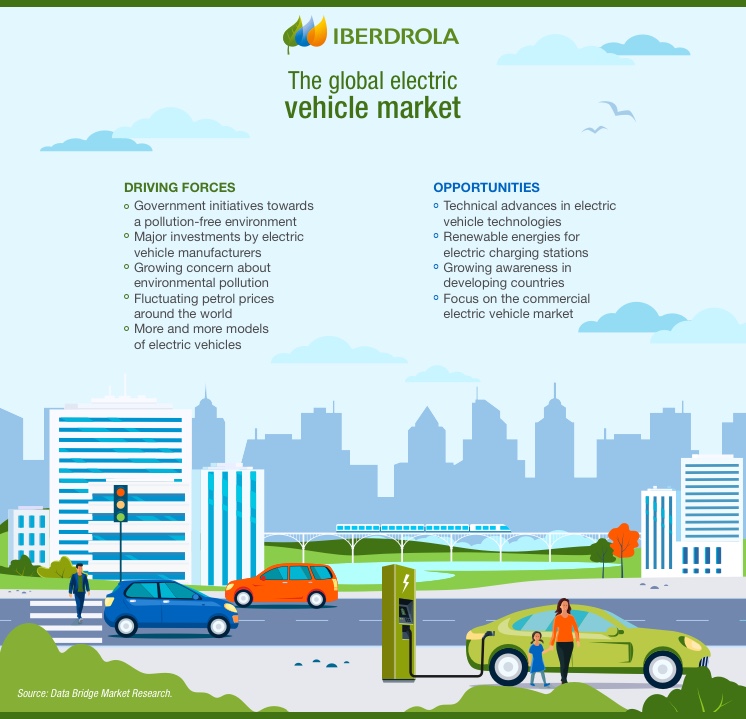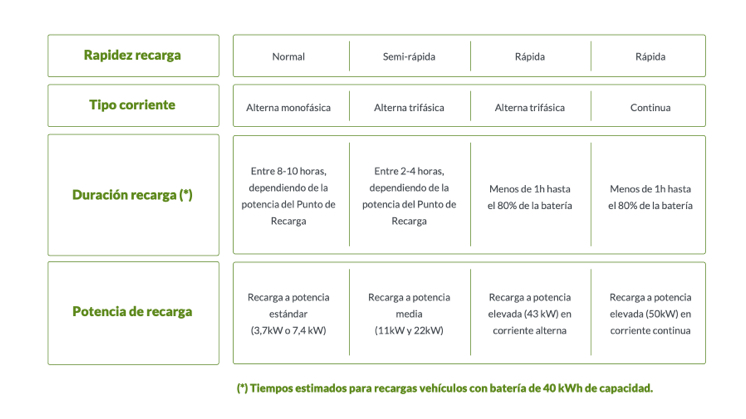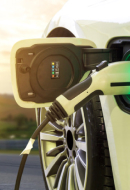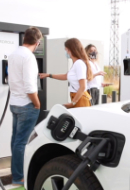Electric vehicle charging stations
Electric vehicle charging stations, keys to the future of sustainable mobility
The paradigm shift in mobility, which advocates for electric vehicles that do not harm the environment, is driving the increasing spread of charging points. Thus, also known as electric charging stations are beginning to become an everyday reality in the landscape of cities and roads. Here we tell you how they work and the different types of charging they offer.

Transport, which is fundamental in the fight against climate change, must be sustainable, and steps are being taken every day towards this reality. The mobility of the future, therefore, depends on the world adopting electric vehicles that do not emit greenhouse gases and, for this, the availability of charging stations is equally or perhaps even more important than renewing the vehicle fleet.
Sustainable urban mobility and electric vehicles
According to a Bloomberg report External link, opens in new window., there will be 116 million electric vehicles on our roads by 2030 and they will account for 30 % of sales. That means that during the current decade, the charging point
External link, opens in new window., there will be 116 million electric vehicles on our roads by 2030 and they will account for 30 % of sales. That means that during the current decade, the charging point External link, opens in new window. infrastructure must be developed to the same extent. In absolute terms, China is still the world's biggest market for electric vehicles
External link, opens in new window. infrastructure must be developed to the same extent. In absolute terms, China is still the world's biggest market for electric vehicles External link, opens in new window. with 2.3 million electric vehicles on the road (45 %) of the global fleet. Europe and the United States lag far behind these numbers.
External link, opens in new window. with 2.3 million electric vehicles on the road (45 %) of the global fleet. Europe and the United States lag far behind these numbers.

 SEE INFOGRAPHIC: The global electric vehicle market [PDF] External link, opens in new window.
SEE INFOGRAPHIC: The global electric vehicle market [PDF] External link, opens in new window.
WHAT IS AN ELECTRIC VEHICLE CHARGING STATION
A charging station, also called an electric vehicle charging station, is simply a system that provides electric power to charge the batteries of plug-in vehicles, whether they are electric or hybrid: cars, lorries, buses or motorcycles, whether they are shared or private. These type of stations are usually found in public areas, such as streets or shopping centres, mainly in parking areas.
Little by little, this type of charging points will gradually gain ground over petrol stations, which in some cases will eventually be converted. While the latter require underfloor tanks with thousands of litres of fuel pumped to each of the available hoses, the former only need an electrical connection with sufficient power and a converter to manage the vehicle's charging.
How an electric vehicle charging station works
To charge the electric car's batteries, unless you have charging equipment at home, you need to go to an electric vehicle charging station. There we must follow a series of steps to complete the charging process:
1. Activate the charging point with an app from your mobile phone, or alternatively with an RFID type card.
2. Connect the appropriate hose according to the type of load.
3. Wait for the loading process to complete.
Charging time of an electric car
Depending on the type of conversion and the available power, there are different types of charging and different charging times are required:
 Mode 1
Mode 1
The vehicle is connected to a domestic electricity source without establishing any communication protocol or intermediate device. This is not particularly safe and is often used to charge two-wheel vehicles, as cars cannot charge in this mode.
 Mode 2
Mode 2
Electric cars often fitted with an internal converter that allows the car to be plugged into a domestic AC power socket and the batteries to be charged via an intermediate device that ensures effective charging. Although it can be used occasionally for vehicle charging, manufacturers do not recommend this. In addition, normal household sockets are limited to 16 amps and charging takes six to eight hours.
 Mode 3
Mode 3
Communication is established between the car and the charging point, which can be a home charger, a point in a shop car park or a public access point. The charging hose has different contacts that check the charging and ensure it is carried out correctly. The current is alternating current and allows charging at higher power and twice the speed of a normal plug socket.
 Mode 4
Mode 4
Fast charging is the most expensive and is available at service areas, shopping centres and other public access points. They have an external power converter that allows DC charging and they use a different connection to Mode 3 that allow much faster charging. They usually have a power rating of 50 kW or more, which allows a car to be charged in less than 30 minutes.
In addition, within this Mode 4, there are ultra-fast charging points, which can provide up to 700 kW of power and can charge 80 % of the capacity in just six minutes. In some countries like Israel, the Netherlands and China, charging points where the flat battery is replaced by a charged one in a few minutes have also been tested, but have not been successful due to high costs and the lack of a battery standard for electric cars.

Además, dentro de este modo 4, hay unos puntos de recarga ultrarrápida que pueden proporcionar hasta 700 kW de potencia y pueden cargar el 80 % de la capacidad en tan solo seis minutos. En algunos países, como Israel, Holanda o China, se han probado también puntos de recarga en los que se remplaza la batería agotada por una cargada en unos pocos minutos, pero no han tenido éxito debido a los altos costes y a la falta de un estándar de baterías para coches eléctricos.

Electric car batteries
Everything you need to know about electric car batteries.

History of the electric car
Electrically powered cars have been on the road for almost two centuries.

Infraestructure for electric mobility
Are our roads ready for the electric vehicle revolution?





